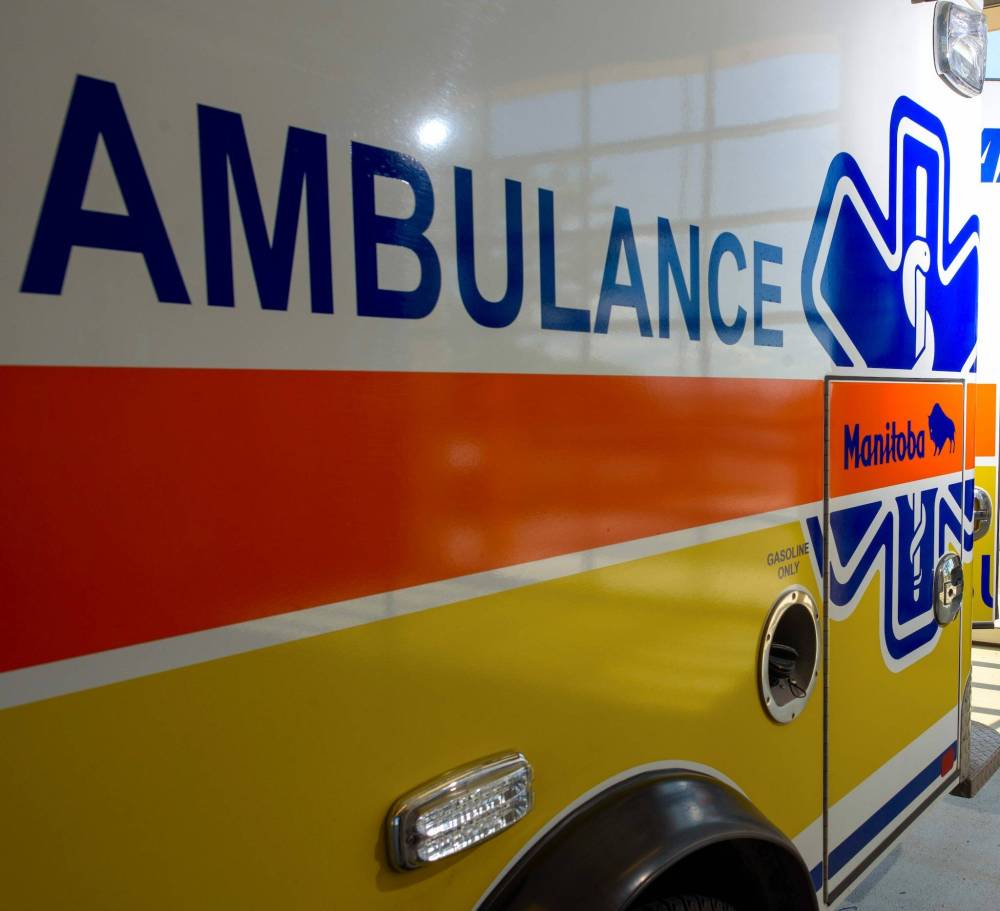Increase in number of doctors is only a start
Advertisement
Read this article for free:
or
Already have an account? Log in here »
To continue reading, please subscribe:
Monthly Digital Subscription
$1 per week for 24 weeks*
- Enjoy unlimited reading on winnipegfreepress.com
- Read the E-Edition, our digital replica newspaper
- Access News Break, our award-winning app
- Play interactive puzzles
*Billed as $4.00 plus GST every four weeks. After 24 weeks, price increases to the regular rate of $19.00 plus GST every four weeks. Offer available to new and qualified returning subscribers only. Cancel any time.
Monthly Digital Subscription
$4.75/week*
- Enjoy unlimited reading on winnipegfreepress.com
- Read the E-Edition, our digital replica newspaper
- Access News Break, our award-winning app
- Play interactive puzzles
*Billed as $19 plus GST every four weeks. Cancel any time.
To continue reading, please subscribe:
Add Winnipeg Free Press access to your Brandon Sun subscription for only
$1 for the first 4 weeks*
*$1 will be added to your next bill. After your 4 weeks access is complete your rate will increase by $0.00 a X percent off the regular rate.
Read unlimited articles for free today:
or
Already have an account? Log in here »
Manitoba posted a record increase of new physicians this past year, a development that deserves recognition.
According to the latest figures from the College of Physicians and Surgeons of Manitoba, the province added a net new 164 doctors as of April 30, the largest annual increase since at least 2008.
In a health care system long plagued by shortages, backlogs and overworked staff, any growth in the physician workforce is welcome news. Patients, families and communities across the province will feel the benefits of these additional doctors, especially in regions that have been grappling with a lack of access to basic medical care.

FILE
Manitoba has logged an increase in doctors.
But while the increase is encouraging, it would be short-sighted to declare victory. Beneath the surface of this good news lie troubling trends that Manitoba cannot afford to ignore.
The first concern is scale. Even with the addition of 164 physicians, Manitoba still has one of the largest shortages of doctors in Canada. The Canadian Institute for Health Information consistently ranks Manitoba near the bottom when it comes to physician supply per capita.
For patients, this shortage is felt most acutely in emergency departments, rural hospitals and family practices, where residents often struggle to find a regular physician, or endure long waits for specialist appointments.
The fact that Manitoba continues to lag behind much of the country in this critical measure is a reminder of how deep the problem runs.
Equally concerning is where these new doctors are coming from. Of the physicians who began practicing in Manitoba in 2024, only 29 per cent were trained locally — the lowest proportion in years.
That means the vast majority were recruited from outside Canada. Manitoba has long relied on internationally trained physicians to help fill gaps, and their contributions to the health-care system cannot be overstated. They bring valuable expertise, diverse training backgrounds and a willingness to serve communities in need.
But the reliance on international recruitment raises questions about sustainability and retention. How long will some of the internationally recruited physicians remain in Manitoba, particularly if they are offered higher pay and better working conditions elsewhere?
The decline in the proportion of locally trained physicians should be a red flag. When the number of locally trained doctors stagnates or shrinks, the province risks becoming overly dependent on international recruitment.
This is not to say Manitoba should scale back international recruitment. Quite the opposite. It must continue to welcome physicians trained abroad and provide the support they need to succeed and feel at home here.
At the same time, however, the provincial government, the University of Manitoba and health authorities must do more to expand opportunities for local training.
Equally important is retention. Recruitment alone will never be enough if the province cannot keep the doctors it attracts. That requires improving workplace conditions in hospitals and clinics, and reducing burnout by addressing staff shortages.
The arrival of 164 new physicians is a step in the right direction, but it should be viewed as the beginning of a long and difficult journey rather than the end of one.
Manitoba’s health-care system remains stretched thin, and its physician shortage continues to compromise patient care. Without a stronger commitment to training and retaining more local doctors, and without serious efforts to keep internationally recruited physicians from leaving, the province risks falling further behind.
Manitobans deserve a health-care system that is stable, sustainable and accessible. Gains in recruitment are encouraging, but they must be matched with long-term strategies that ensure the doctors who come — and those who train here — remain part of the health system for decades to come.


